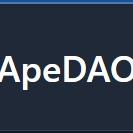Enhancing ApeCoin DAO's Voting System
Revolutionize ApeCoin DAO's voting: Dynamic power system encourages commitment, deters last-minute votes, ensuring fair decisions.
Created on 30th October 2023
•
Enhancing ApeCoin DAO's Voting System
Revolutionize ApeCoin DAO's voting: Dynamic power system encourages commitment, deters last-minute votes, ensuring fair decisions.
The problem Enhancing ApeCoin DAO's Voting System solves
Dynamic voting power algorithm that revolutionizes ApeCoin DAO's governance structure:
Fairness: The algorithm considers various factors, rewarding long-term holders and discouraging manipulative behavior, ensuring a level playing field.
Transparency: Genuine contributors gain higher voting power, fostering informed decisions and minimizing undue influence.
Community Trust: A more credible voting system attracts authentic participants, driving community engagement and growth.
How it Works:
buy_value = APE's bought on that transaction
age = how many days old transaction
so let's take an example:
transactions->
No. | Action | Amount | Age |
1 Buy 100 10
2 Buy 50 8
3 Sell 50 6
4 Buy 10 3
5 Sell 60 2
1st transacton: (buy)
buy_value * 10% of age
=> 100 10% 10
=> 100 value...
2nd transaction: (buy)
buy_value * 10% of age
=> 50 10% 8
=>40
prev_value + this_value
100 + 40 = 140 value...
3rd transaction: (sell)
sell_value * 10% of age
=> 50 10% 6
=> 30
prev_value - this_value
140 - 30 = 110 value...
4th transaction: (buy)
buy_value * 10% of age
=> 10 10% 3
=> 3
prev_value + this_value
110 - 3 = 107 value...
5th transaction: (sell)
sell_value * 10% of age
=> 60 10% 2
=> 12
prev_value - this_value
107 - 12 = 95 value...
Balance = 100+50-50+10-60 => 50
Voting Power = value / balance;
Voting Power = 95 / 50 = 1.9 approx( 2 )........
thus his voting power is 2. Fair enough na.
Challenges I ran into
Challenges Encountered:
Testing Environment Constraints:
Difficulty in obtaining a suitable testing wallet for trial runs.
Resolution: Adapted by devising workarounds and leveraging alternative testing methodologies to simulate wallet functionalities.
Financial Limitations:
Insufficient funds for comprehensive testing and implementation.
Overcoming: Opted for scaled-down simulations and strategic allocation of available resources to cover critical testing aspects.
Resource Scarcity:
Limited availability of essential resources for development and testing.
Solution: Innovated by optimizing existing resources and seeking alternative tools or platforms to continue project advancement.
Algorithm Complexity:
Initial absence of an algorithm capable of addressing all edge cases.
Mitigation: Engaged in iterative learning cycles, progressively refining the algorithm while constantly testing against diverse scenarios.
Iterative Testing and Refinement:
The need for repetitive testing and refining of the project.
Resolution: Adopted an agile approach, consistently learning from testing outcomes, and iteratively improving the project based on acquired insights.
Overcoming the Challenges:
Adaptability and Resourcefulness:
Leveraged adaptive strategies and resourcefulness to circumvent constraints, ensuring project continuity and development progression.
Innovative Problem-Solving:
Embraced innovative problem-solving methods to tackle each obstacle, finding tailored solutions for optimal project advancement.
Continuous Learning and Refinement:
Emphasized continuous learning and refinement, allowing the project to evolve iteratively and gradually attain its final, robust state.
Each challenge was approached with a problem-solving mindset, utilizing available resources judiciously, and consistently refining the project through iterative processes, ultimately leading to the successful completion and readiness of the final project for deployment.
Technologies used
